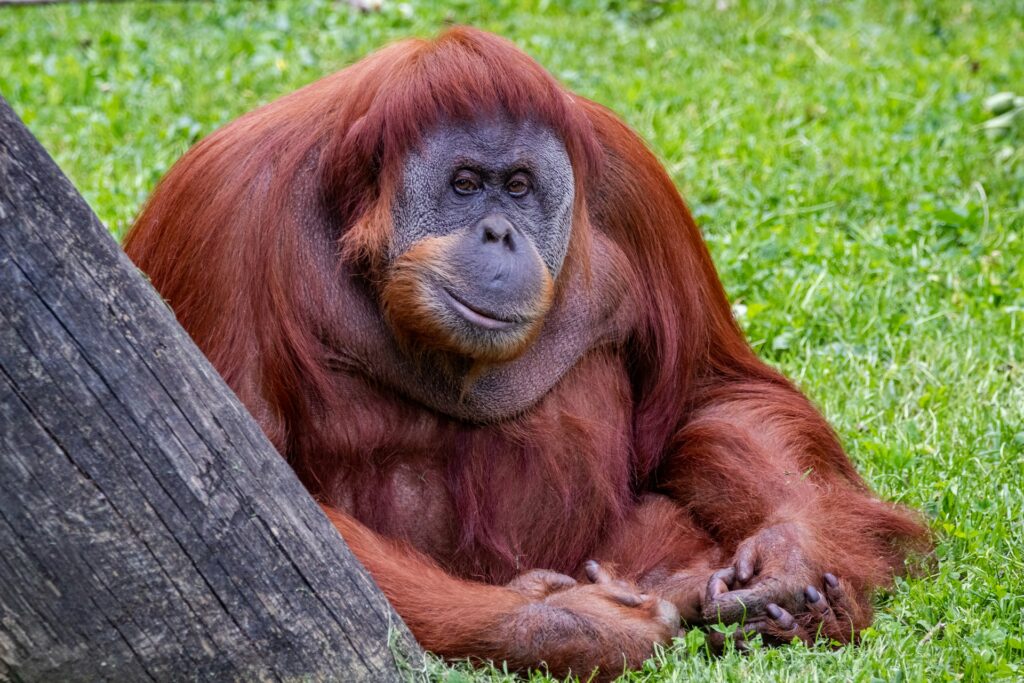Introduction
When we think of gorillas, we imagine large, powerful primates covered in thick, dark fur. However, the rare phenomenon of the hairless gorilla has captured the curiosity of both scientists and wildlife enthusiasts. This article delves into the causes, implications, and fascinating facts surrounding hairless gorillas.
What Is a Hairless Gorilla?
A hairless gorilla is a gorilla that lacks the typical thick fur covering its body. This condition is extremely rare and usually results from genetic mutations, medical conditions, or diseases such as alopecia. The absence of fur exposes the gorilla’s muscular structure, making it appear more human-like.
Causes of Hairlessness in Gorillas
1. Genetic Mutations
Genetic mutations can disrupt normal hair growth. These mutations may be inherited or occur spontaneously. While rare, they can lead to conditions like congenital alopecia.
2. Alopecia
Alopecia is a condition characterized by hair loss. It can be caused by stress, hormonal imbalances, or autoimmune disorders. Gorillas with alopecia lose patches of hair or, in severe cases, become completely hairless.
3. Skin Infections and Diseases
Parasitic infections, fungal diseases, and skin conditions can result in hair loss. These infections cause inflammation and damage hair follicles, leading to baldness.
4. Nutritional Deficiencies
Poor nutrition can weaken hair follicles. A lack of essential vitamins and minerals, such as biotin and zinc, may contribute to hair loss in gorillas.
Scientific Insights into Hairless Gorillas
Hairless gorillas offer valuable insights into primate biology. Scientists study these gorillas to understand hair growth, genetic mutations, and the evolutionary role of body hair. Observing hairless gorillas also helps researchers learn about the psychological and social effects of physical differences within primate groups.
Behavioral Impact of Hairlessness
1. Social Dynamics
In gorilla troops, physical appearance plays a role in social interactions. A hairless gorilla may face challenges integrating into groups due to its unusual look. However, some hairless gorillas adapt well, demonstrating resilience and strong social bonds.
2. Self-Perception and Stress
While it’s difficult to gauge self-perception in animals, changes in appearance can affect a gorilla’s confidence and stress levels. Hairless gorillas may experience higher stress in unfamiliar environments.
Conservation Status of Hairless Gorillas
Hairless gorillas are not a separate species, so their conservation status aligns with their species, such as the Western lowland gorilla or the mountain gorilla. Both face threats from habitat loss, poaching, and disease. Conservation efforts focus on protecting all gorillas, including those with unique conditions.
Famous Cases of Hairless Gorillas
1. Anaka – Zoo Atlanta
Anaka, a gorilla at Zoo Atlanta, gained attention for her pink, hairless fingers, a condition linked to a genetic mutation. While not completely hairless, her unique appearance sparked interest worldwide.
2. Iya and Baldy
Two hairless gorillas named Iya and Baldy have been documented in captivity. Their striking appearance highlights the diverse genetic expressions within gorilla populations.
Differences Between Hairless Gorillas and Other Hairless Primates
While hairless conditions occur in various primates, such as chimpanzees and humans, the causes and manifestations differ. Hairless gorillas tend to have more pronounced muscular features due to their size and build.
Health Concerns for Hairless Gorillas
Hairless gorillas may face unique health challenges, including:
- Skin Sensitivity: Without fur, their skin is vulnerable to sunburn and temperature extremes.
- Infections: Exposed skin is more susceptible to cuts, abrasions, and infections.
- Stress: Physical differences can contribute to psychological stress in social environments.
How Zoos and Sanctuaries Care for Hairless Gorillas
Zoos and sanctuaries play a crucial role in caring for hairless gorillas. Their care strategies include:
- Customized Diets: To address nutritional needs.
- Skin Protection: Providing shaded areas and skin treatments.
- Social Integration: Ensuring the gorilla remains part of its social group to prevent isolation.
Public Fascination with Hairless Gorillas
The public’s fascination with hairless gorillas often stems from their human-like appearance. Viral images and videos spark discussions about evolution, genetics, and animal welfare. This attention can also raise awareness about gorilla conservation.
The Evolutionary Perspective on Body Hair
Body hair serves various functions, including temperature regulation, protection from the sun, and sensory perception. Studying hairless gorillas helps scientists explore the evolutionary significance of hair in primates and how different species adapt to environmental pressures.
Ethical Considerations in Displaying Hairless Gorillas
Ethical questions arise when zoos and media showcase hairless gorillas. While they attract public interest, it’s essential to prioritize the animal’s well-being over entertainment. Ethical practices involve:
- Respectful Representation: Avoiding sensationalism.
- Educational Outreach: Using their stories to promote conservation awareness.
Frequently Asked Questions (FAQs)
1. Are Hairless Gorillas Healthy?
Most hairless gorillas are healthy despite their condition. However, they may require additional care to manage skin sensitivity and other health concerns.
2. Can Hairless Gorillas Survive in the Wild?
Survival in the wild can be challenging for hairless gorillas due to exposure to harsh environmental conditions. In captivity, they receive specialized care that supports their well-being.
3. Is Hairlessness in Gorillas Inherited?
Hairlessness can be inherited if caused by genetic mutations. However, it often results from non-genetic factors like disease or stress.
4. How Rare Are Hairless Gorillas?
Hairless gorillas are extremely rare. Documented cases are limited, making them a subject of scientific interest and public fascination.
5. Do Hairless Gorillas Face Social Challenges?
Yes, they might face social challenges due to their appearance. However, strong social bonds and adaptive behaviors often help them integrate into their groups.
Conclusion
The phenomenon of the hairless gorilla is both rare and captivating. These unique primates offer valuable insights into genetics, evolution, and social dynamics. By understanding their stories, we can foster greater appreciation for biodiversity and the importance of wildlife conservation.


